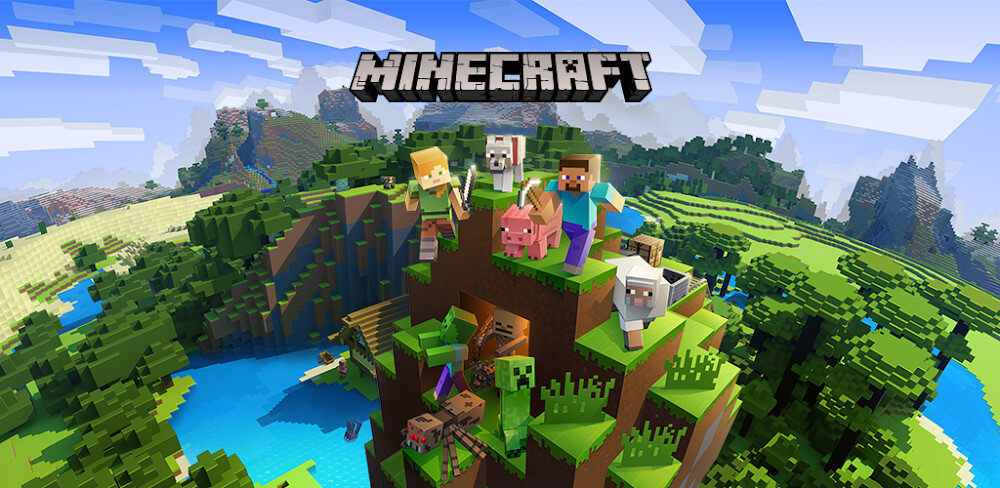Minecraft, the liked sandbox game, has captivated gamers for over a decade with its limitless creativity and open-ended gameplay. However, the respectable model can every now and then experience limiting, in particular for players seeking a more customized enjoy. This is where Minecraft Mod APKs are available in, presenting a international of opportunities past the vanilla game.
A WORLD TRANSFORMED: GRAPHICS AND ANIMATIONS
While Minecraft’s attraction lies in its pixelated aesthetic, Mod APKs can extensively decorate the visible experience. High-decision texture packs update the same old textures with elaborate information, bringing the sector to lifestyles with vibrant shades and practical textures. Additionally, animation upgrades can breathe lifestyles into the sport, showcasing smoother man or woman motion, fluid animations for gadgets, and dynamic weather consequences.
BEYOND THE ORDINARY: STORY MODE AND FEATURES
The authentic Minecraft offers a experience of freedom and exploration, but it lacks a described narrative. Mod APKs can bridge this gap by means of introducing captivating storylines with attractive quests, NPCs with specific personalities, or even branching narratives that reply to participant alternatives.
Furthermore, Mod APKs introduce a plethora of capabilities now not observed in the vanilla sport. These can variety from new biomes and dungeons to thrilling gameplay mechanics like magic structures, weapon crafting, and superior farming techniques. The opportunities are absolutely infinite, permitting players to tailor the sport to their precise alternatives.
MECHANICS AND CONTROLS: NAVIGATING THE MODDED WORLD
The core gameplay mechanics of Minecraft stay largely unchanged with Mod APKs. Players still mine resources, build structures, and discover the sector. However, mods regularly introduce new equipment, items, and crafting recipes, necessitating moderate changes to how players have interaction with the environment. Additionally, some mods can also introduce new manage schemes for precise abilties or mechanics, requiring gamers to adapt their gameplay techniques.
ONLINE OR OFFLINE: EMBARKING ON AN INDIVIDUAL OR SOCIAL ADVENTURE
Minecraft offers each on line and offline play, and Mod APKs maintain this adaptability. Players can choose to experience the modded revel in solo, exploring their custom designed worlds at their own tempo. Alternatively, they could connect with different gamers on-line, sharing their creations and embarking on collaborative adventures in modded servers.
BEYOND THE GAME: A COMMUNITY OF CREATORS
The Minecraft modding community is a colourful area filled with passionate folks that devote their time and abilties to developing new and exciting stories. These dedicated gamers expand, share, and talk mods online, fostering a collaborative surroundings wherein creativity flourishes. By having access to Mod APKs, gamers end up a part of this community, gaining access to a widespread library of content material and contributing to the continued evolution of the sport.
A WORD OF CAUTION: SECURITY AND COMPATIBILITY CONCERNS
While Minecraft Mod APKs offer a wealth of opportunities, it’s important to workout caution when downloading and putting in them. Downloading from untrusted resources can divulge gamers to malware or viruses, probably compromising their device’s security. Additionally, now not all Mod APKs are well matched with each model of Minecraft, and putting in incompatible mods can cause game crashes or system faults.
CONCLUSION: A WORLD OF UNLIMITED CREATIVITY
Minecraft Mod APKs offer a completely unique manner to experience the liked recreation, pushing the limits of creativity and customization. With improved visuals, charming memories, and thrilling new functions, mods cater to gamers looking for a richer and more personalised gaming experience. However, it is critical to approach Mod APKs with caution, prioritizing protection and compatibility to ensure a safe and exciting enjoy.





Leave a Comment
You must be logged in to post a comment.